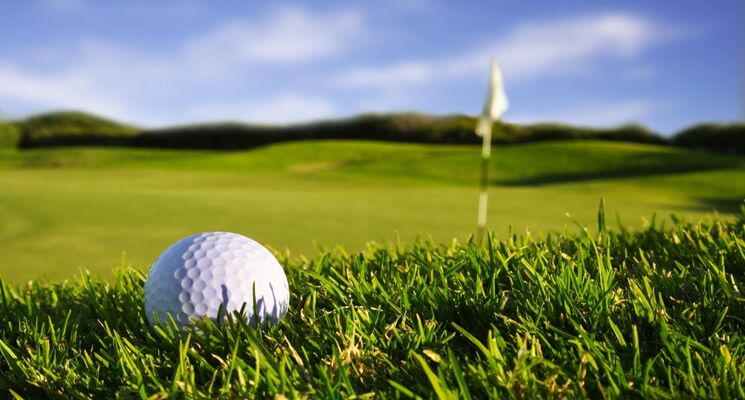How to Grip a Golf Club

The first thing every golf teacher explains to students before anything else is the golf grip because it is the foundation on which the game is based. Grip goes a long way beyond just holding firmly and striking the golf ball; it requires skill and calculation because the smallest error can change everything.
So, is there a particular way on how to grip a golf club to win? Yes, there are ways proven by professional golfers to ensure a quick win when you swing. In the same vein, intermediate players who didn’t learn this essential thing will know errors to avoid when next they want to swing a golf club.
Which Method Are You Going for?
To have the perfect golf shots, you need to learn the different methods of holding a golf club, only then will you have what you truly desire. At the end of this article, you should have gotten familiar with the method suitable for you, ready to be put to practice. Here are the various techniques that make the best win:
Interlocking Golf Club Grip
This is suitable for players with small hands and who have a problem with a firm grasp on the golf club. In four easy ways, the interlocking golf grip could be utilized effectively, and such a player can enjoy the game. These ways include:
- Use your left hand to hold the club: Make sure you position your hands correctly on the club while its head rests on the ground. The clasp should be on your left hand so that it maintains an interlocked position.
- Make a connection with your hands: While your palms are on the club, slowly move them to a position where the right pinkie interlocks with the forefinger of the left hand. If you feel uncomfortable or painful, that means the pinkie is overlapping and needs to be adjusted; a pleasant sensation means interlocking is fine.
- Keep a good clasp: While the grasp is still on your left hand, add the fingers of your right hand to maintain a perfect golf grip. This way, there should be curling and no space left in between the fingers.
- Raise thumbs high: Before swinging the club, make sure you raise the thumbs high so that they align with the shaft. Once this is done, you can go ahead and make your shot; it is one experience you won’t regret.
Overlapping Grip
It is also called the Vardon grip, which is great for players who feel discomfort while holding the end of a golf club. Follow the steps below.
- Hold the club in your left hand: In the usual way, keep your club in position with the grip on the palm of your left hand. Make sure the heel of your hand that connects to the wrist is even to the end of the handle.
- Ensure your left fingers are properly arranged: Make sure there are no gaps in between the fingers of your left hand. In the same vein, the thumb should be facing up the shaft ready to make the next move.
- Make right-hand overlap with the left hand: Let your left pinkie be directly above the forefinger of your right hand – this is the overlapping stage. Keep the spaces between the fingers closed, no matter what.
- Add fingers to the club: Finally, add the remaining fingers to the golf club while the two thumbs are facing up the shaft. Make your shot based on correct calculations and see the difference.
Baseball Grip
The golf baseball grip is only suitable for players who can find neither interlocking golf grip nor the overlapping one comfortable due to various reasons. It differs from the golf driver grip. It is also great for children, senior citizens, as well as people who are not professionals. This one is unlike those described above, but they still share certain similarities.
Below are steps to take for using this grasp extensively.
- Keep the club in left-hand grip: This is usually before making any move to adjust the hands in position for a baseball technique.
- Curl the fingers around the golf club: The next thing is to curl the fingers of the left hand around the club tightly to ensure a perfect grasp. This curling must include your thumb (do not raise thumb towards the shift).
- Place right fingers below left fingers: Make sure you put the fingers of your right hand directly below your left hand and keep the sides against each other. Let the right pinkie touch the inner part of your hand (palm) while it is curled around the club.
- Keep all fingers on the grip: In addition to the clasp created by your left hand, the fingers of the right hand are needed to form a standard baseball bat grip. Ensure that both thumbs are curled firmly around the club handle before you take a swing at the ball.
Cross-Handed Grip
For an excellent stroke, a cross-handed clasp is needed; it makes use of a putter to ensure that it is possible. Here are ways to use a cross-handed grip:
- Put putter in your right hand: This one is quite different because the clasp is the trail hand (the right one) rather than the left one, and the putter head still needs to be directly on the ground. Make sure your right hand is facing upward, and you are in position well.
- Curl your fingers around the shaft: After that, curl the fingers of your right hand around the putter for them to be loose but arranged tightly together.
- Connect left pinkie to the right-hand: Slowly, connect the pinkie of your left hand to your forefinger and make sure it is comfortable before you make the next move.
- Add the remaining fingers: Finally, add the remaining fingers of your left hand to the clasp and take your swing.
While overlapping is the best golf grip and the most common type, other methods like interlocking, cross-handed, and baseball have their significance too. For instance, the interlocking gives more power during a shot, the baseball one gives comfort to players, and the cross-hand one ensures a smooth putting in the game. In essence, the kind of clasp you would choose should depend on what is comfortable for you and suitable for your level (beginner, intermediate, or professional).
Basic Technique
There are basic techniques involved with gripping a golf club regardless of the methods comfortable by you, and they include:
Left Hand
One common thing with all of the techniques described above, i.e., overlapping, interlocking, baseball, and cross-handed, is that the left-hand is where the clasp is. It is also called the lead-hand because it is the first thing that directs other things you will do with a golf club such as curling, interlocking, and overlapping. Once the clasp is made on the left-hand while the head of the club is directly on the ground, other things follow.
Strong or Weak Grip
Before the golf grip left hand is made, you need to be decisive on what to go for, i.e., whether a firm golf grip or weak golf grip. There are ways to determine what clasp you have established; V pointing towards the right means strong clasp and towards the left means weak one. There are pros and cons to each of these, and you must be aware of that.
Pros
- It gives you a closed clubface, and the ball hit will hook well (right to left sidespin)
- It gives you an open clubface (left to right sidespin)
Cons
- It sometimes allows you to lose control of the ball
- It keeps the hands restricted to some things
Before you understand how weak and strong golf grip works, you should maintain a neutral golf grip so you could hit correctly without curving the ball.
Grip Pressure
Another vital thing to keep in mind is the pressure because only that will help you make a correct golf grip and enable you to swing with ease. The grip pressure is a function of how tight the clasping of the club should be; therefore, the degree of tightness amounts to pressure. However, it is essential to keep the pressure at an average to have a perfect shot – if it’s too tight, then thin, weak shots are inevitable.
Checking Your Grip
Next is checking your left hand or golf grip right hand to know if you are right on track to make a shot. As aforementioned, there are only three types of clasps, i.e., strong, neutral, and weak, and they all depend on where the V is pointing. They have their significance and the position in which the body stays when the shot is made.
Grip Size
There is little to say about the sizes of golf grasp clubs because there are just a few of them with the standard size being 7 inches to 8 3/4 inches. This site is for average to professional players who have their wrist cease extending to the middle tip; players are expected to pick according to their hand sizes. For junior grips, the golf grip size should be below 7 inches because the wrist cease may not extend to the tip of the middle if it is longer than that.
Finally: Change Your Golf Grip Once a Season
Don’t get so used to a particular style; try to improve so you could make better shots than you always have. Change your golf grip once a season; if you are an interlocking grip golfer, try to use the overlapping one too. Being able to use all kinds of styles conveniently without discomfort is what makes you a professional golfer.










